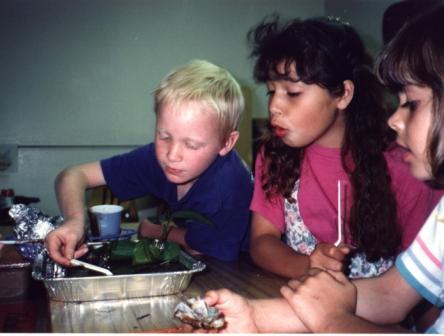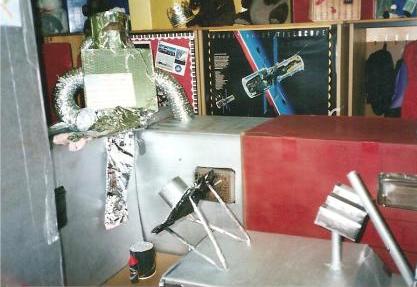
I have the distinct honor of working with some of the most dedicated educators on the planet. Some of these incredible educators have been trained in Project-Based Learning before learning more about the Tabor Rotation Framework. Those who believe in the power of PBL and small-group, differentiated instruction may have ask themselves this question,
“Can a classroom use Project-Based Learning and Tabor Rotation?
The answer is YES!!!
The Tabor Rotation Framework is a way of structuring a classroom so that a teacher is able to meet and exceed the needs of all students using the 14 Essential Elements of Tabor Rotation and the 3 Phases of Tabor Rotation. It provides a platform that ensures every level of student is being moved a little bit further than they were the day before. Tabor Rotation makes sure that everything a student needs in planned for–including projects.
What is Project-Based Learning? The NEA- Research Spotlight on PBL gives a simple explanation:
…As far back as the early 1900s, John Dewey supported the “learning by doing” approach to education, which is the essential element of PBL. Today, PBL is viewed as a model for classroom activity that shifts away from teacher-centered instruction and emphasizes student-centered projects.
Teachers who use Tabor Rotation know that’s exactly what they do–move away from teacher-centered and emphasize student-centered. In fact, participants who attended “TR2: Taking Tabor Rotation to the Next Leve,” spent a portion of the day exploring how to bring real-world, meaningful and purposeful projects into the Tabor Rotation Framework. What PBL proponents may not realize is where, when, and how PBL and Tabor Rotation mesh seamlessly in a week of Tabor Rotation. Keep reading…
I have always used project-based learning, so I was using it when I created Tabor Rotation. It just may have been packaged differently. My district, Prince George’s County Public Schools, in Maryland was using the Dimensions of Learning Model created by Robert Marzano and Debra Pickering. This tool helped me facilitate the type of learning that I knew my students needed and it complied with the district initiatives. Learning that is purposeful, meaningful, qualitatively challenging, and enduring beyond the classroom is called Meaningful Use of Knowledge or Dimension 4 in the Dimensions of Learning Model. For an overview of the Dimensions of Learning Model you may want to view this brief slide show.
My students needed the intense instruction and on-going preparation for state tests that Tabor Rotation provided. I fine-tuned Tabor Rotation using teams, team roles, math stations, on-going assessment, and guided math based on readiness levels, but I never gave up anything else I was doing. This included projects (See the video clip of the space station my students built in the blog post, “The Origin of Tabor Rotation.”) Marzono’s discovery of this project was the catalyst that began our work together as a theorist and a practitioner. Marzano later learned about Tabor Rotation and its impact on my students in the in-depth exploration of mathematical concepts.

Ready for the nuts and bolts of where PBL fits in a week or unit of Tabor Rotation?
Tabor Rotation Phase 1 emphasizes setting the stage for the unit of concepts. This is the time for building connections to what is about to be studied. It’s also the perfect time for generating the essential questions that will drive the projects produced by students.
Tabor Rotation Phase 2 is about varying the modality in which students learn by using math stations. It also gives teachers the opportunity to teach students, in a small-group, guided setting, the most difficult concepts for the week.
The Technology/Application/Innovation Station is where teachers place the projects. Students can work in pairs, triads, or quads as they develop their projects. The use of technology and innovative strategies is the emphasis here. Guidelines are determined by the students and the teacher and are driven by the in-depth understanding of the state standards that will be needed to complete and share the project.
Phase 3 of the Tabor Rotation Framework is focused on meeting individual needs via readiness groups for all levels of students. While the teacher is meeting with readiness groups, based upon the on-going assessment conducted during Clipboard Cruising, [youtube]https://www.youtube.com/watch?v=-T5nZmevfxY[/youtube] students are working on Choice Boards. A large portion of a Choice Board or Menu of Options may be the projects students are developing.
When will my students have time to share? When planning for a unit of study, a quarter, or a semester, you will plan for and schedule the presenting and sharing the information. The same way you schedule district tests and events, you schedule presentations and projects.
Are there other ways to combine the small-group instruction in the Tabor Rotation Framework and Project-Based Learning? I believe there are and together (thanks for the challenge, Chris) I can’t wait to find them!


